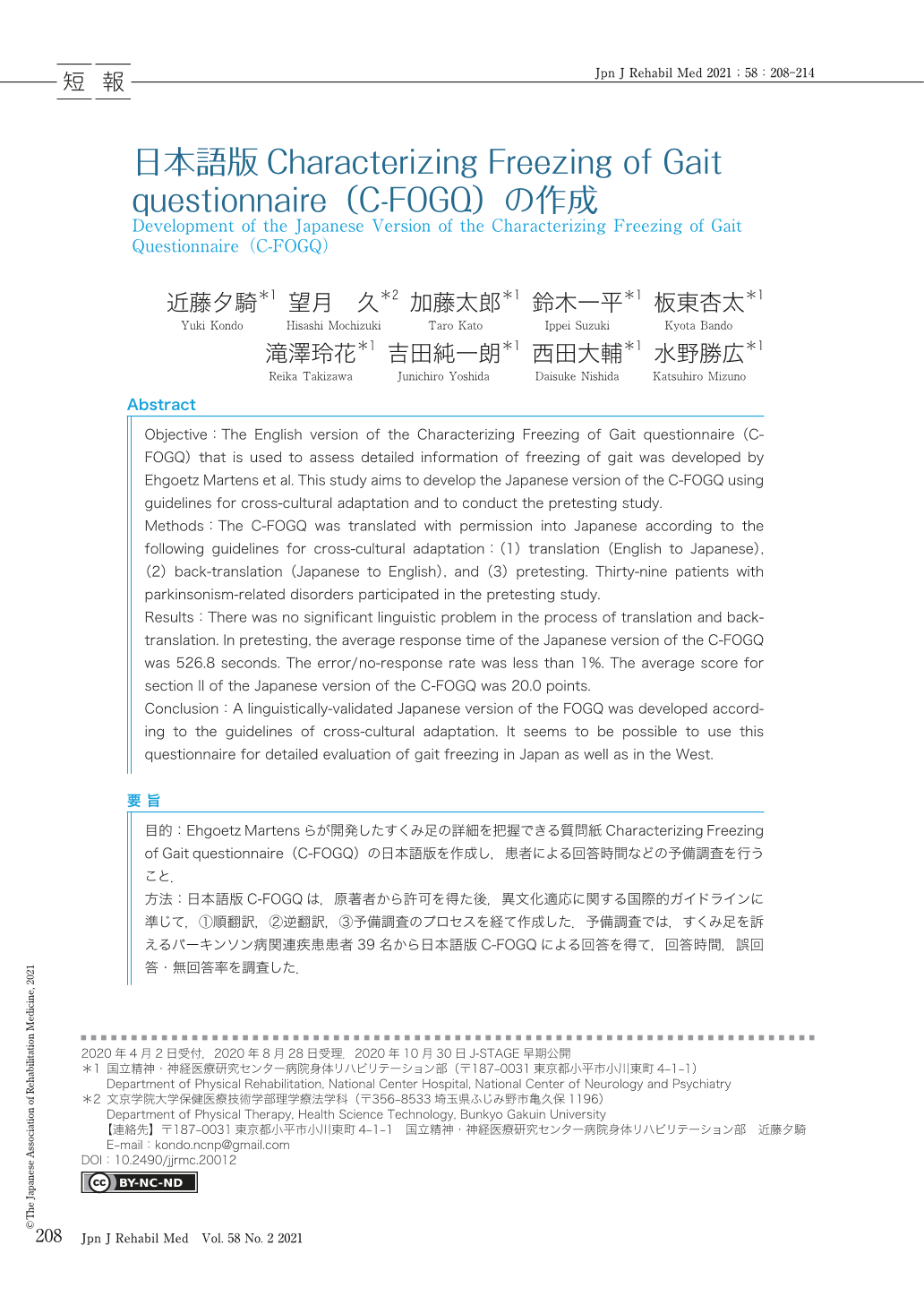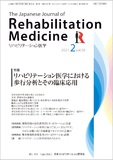Japanese
English
- 販売していません
- Abstract 文献概要
- 1ページ目 Look Inside
- 参考文献 Reference
要旨
目的:Ehgoetz Martensらが開発したすくみ足の詳細を把握できる質問紙Characterizing Freezing of Gait questionnaire(C-FOGQ)の日本語版を作成し,患者による回答時間などの予備調査を行うこと.
方法:日本語版C-FOGQは,原著者から許可を得た後,異文化適応に関する国際的ガイドラインに準じて,①順翻訳,②逆翻訳,③予備調査のプロセスを経て作成した.予備調査では,すくみ足を訴えるパーキンソン病関連疾患患者39名から日本語版C-FOGQによる回答を得て,回答時間,誤回答・無回答率を調査した.
結果:英語原版から日本語への順翻訳ならびに英語への逆翻訳過程において,重大な言語的問題は生じなかった.予備調査の結果,平均回答時間は526.8秒であり,誤回答・無回答率は1%未満であった.Section Ⅱにおける総合得点の平均は20.0点であった.
結論:作成した日本語版C-FOGQは言語的妥当性を有し,10分程度で回答でき,誤回答や無回答率も少ないため,本邦でもすくみ足の評価として使用可能と思われる.
Objective:The English version of the Characterizing Freezing of Gait questionnaire (C-FOGQ) that is used to assess detailed information of freezing of gait was developed by Ehgoetz Martens et al. This study aims to develop the Japanese version of the C-FOGQ using guidelines for cross-cultural adaptation and to conduct the pretesting study.
Methods:The C-FOGQ was translated with permission into Japanese according to the following guidelines for cross-cultural adaptation: (1) translation (English to Japanese), (2) back-translation (Japanese to English), and (3) pretesting. Thirty-nine patients with parkinsonism-related disorders participated in the pretesting study.
Results:There was no significant linguistic problem in the process of translation and back-translation. In pretesting, the average response time of the Japanese version of the C-FOGQ was 526.8 seconds. The error/no-response rate was less than 1%. The average score for section II of the Japanese version of the C-FOGQ was 20.0 points.
Conclusion:A linguistically-validated Japanese version of the FOGQ was developed according to the guidelines of cross-cultural adaptation. It seems to be possible to use this questionnaire for detailed evaluation of gait freezing in Japan as well as in the West.

Copyright © 2021, The Japanese Association of Rehabilitation Medicine. All rights reserved.


